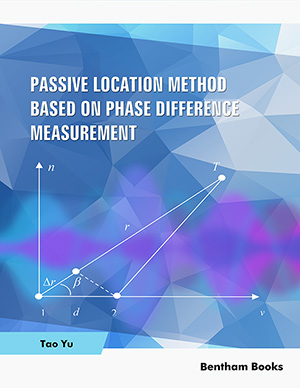Abstract
In this chapter, the fuzzy-free phase difference direction finding method based on a short baseline array is introduced and three different methods are presented. Firstly, the virtual short baseline direction finding method based on onedimensional double-base asymmetrical array is studied deeply, which is constructed by subtraction of the ratio of different sides between two adjacent baselines. The author's findings show that, although the difference between the lengths of two adjacent baselines is less than half a wavelength, the difference of the integers of wavelengths will not be zero in the direction of partial arrival angles but will jump. In this regard, the correction can be realized by the determination of the sine value of the arrival angle by adopting a method like the fuzzy-free detection analysis of the phase difference rate. The second approach is the orthogonal phase difference direction finding method based on equivalent simulation. It is found in the simulation that the curve shape of the differential function of path difference per unit wavelength obtained after phase jump correction is very similar to that of the cosine function. If the maximum value of the function is used for normalization processing and simple square root processing, then the function obtained is basically equivalent to the cosine function. At this time, it can be proved in principle that the results given are equivalent to the Doppler direction finding technique. Then, using the orthogonal array, the maximum value of the function which cannot be known in the one-dimensional array is eliminated by means of the orthogonal ratio, so the real-time direction finding based on phase difference measurement without phase ambiguity is realized. The third approach is the airborne direction finding method based on Doppler-phase measurement. The study shows that the airborne single-baseline interferometer can achieve high precision direction finding without phase ambiguity after integrating Doppler measurement information. The main method is to directly obtain the wavelength integer solution of the radial distance by comprehensively utilizing the velocity vector equation, Doppler frequency shift and its rate of change. Thus, the integral value of the wavelength contained in the path difference between two adjacent array elements can be given. By means of the phase difference measurement, the value less than the wavelength integer in the path difference can be determined. This chapter also explores the effect of phase difference measurement errors on the difference of wavelength integers. The expression of the wavelength number difference based on the phase difference measurement can also be approximated by the unambiguous phase difference direction finding method based on the virtual short baseline. The root mean square measurement error of the wavelength number difference is derived. Through analysis, it is revealed that the wavelength number difference has little effect on the accuracy of a single baseline phase difference direction finding.
Keywords: Virtual baseline, Phase interferometer, Phase jump, Phase ambiguous, Orthogonal array, Doppler DF, Direction finding, Doppler frequency, Airborne single station location, DF error.



















